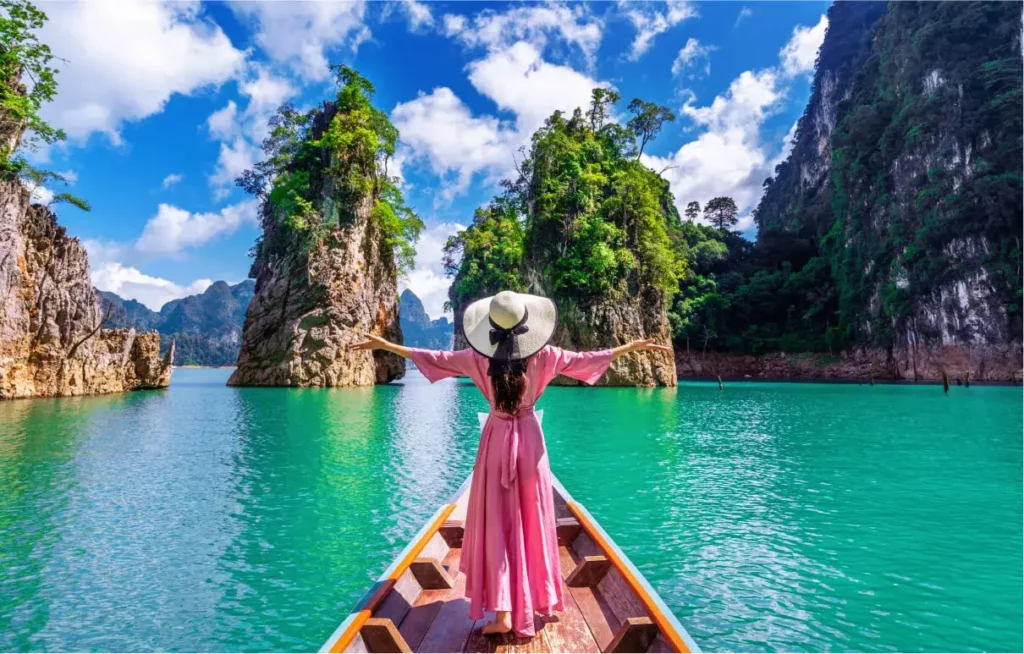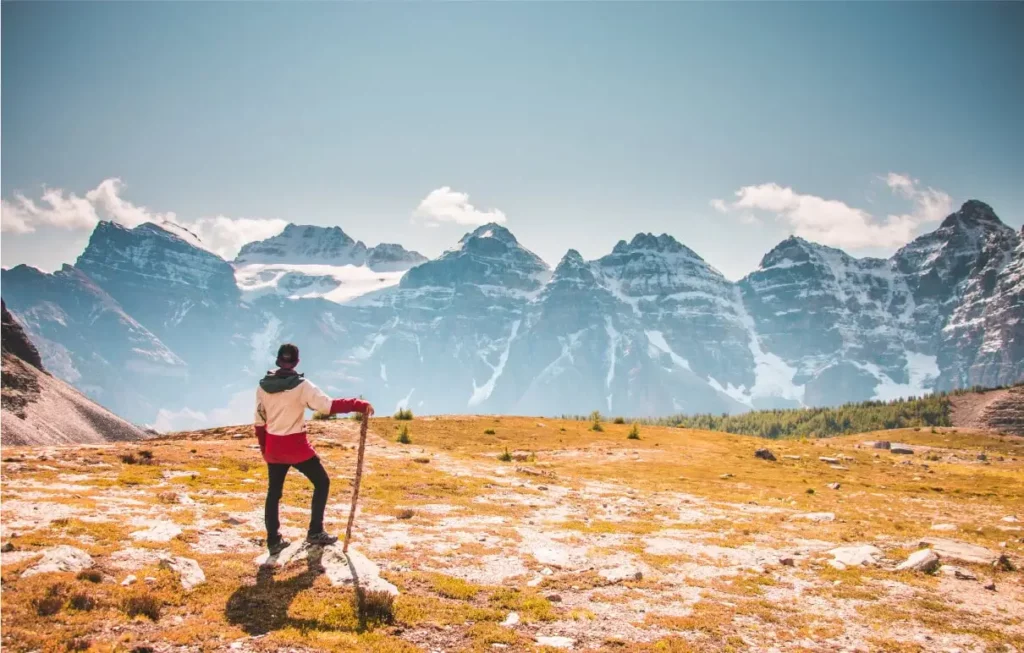Mwapokelelwe ku Lower Zambezi National Park
Lower Zambezi National Park is developing rapidly and gaining in popularity as the game bounces back, its beauty still lies in its unchanged wilderness state and a great place for Zambia safari tour.
The diversity of animals at Lower Zambezi National Parkis not as wide as the other big parks (there are famously no giraffes as the hilly terrain that protects the Zambia River doesn’t suit them).
The opportunities to get close to game wandering in and out of the Zambezi channels are spectacular in Lower Zambezi National Park.
It lies opposite the famous Mana Pools National Park in Zimbabwe, so the whole area on both sides of the Zambezi River is a massive wildlife sanctuary.
The river’s edge is overhung with a thick riverine fringe, including ebony and fig trees. Further inland is a floodplain fringed with mopane forest and interspersed with winterthorn trees and huge acacias.
The rolling hills, which form the backdrop to the park, are covered in broadleaf woodland.
Even though the Lower Zambezi National Park covers an area of 4 092km² / 2 542mi², most of the game is concentrated along the valley floor.
There is an escarpment along the northern end that acts as a physical barrier to most of the park’s animal species. Enormous herds of elephant, some up to a hundred strong, are often seen at the river’s edge.
‘Island hopping’ buffalo and waterbuck are common. Lower Zambezi National Park also hosts good populations of lion and leopard, and listen too for the ubiquitous cry of the fish eagle.
Despite its size, this section of the Zambezi is considered fairly calm and predictable, unlike the mercurial Luangwa River.
For this reason, seasonal fishing, boating and canoeing are popular activities in Lower Zambezi National Park, especially guided kayaking through the channels.
While in Lower Zambezi National Park keep a look out for shy elephant along the way and magnificent flourishes of scarlet carmine bee-eaters at work on their nests in the riverbanks.
Some History – Lower Zambezi Zambia
Zambia lies landlocked between the Tropic of Capricorn and the Equator, shaped like a butterfly and covering about 752,610 square kilometers.
The Lower Zambezi National Park – located in southeastern Zambia – was declared a national park in 1983, serving as a private park of the Zambia president before that.
Because it was private for so long, the park was protected from mass tourism, thus sustaining its pristine wilderness.
Due to the CITES ban on the world ivory trade and because of the presence of ZAWA teams carrying out law-enforcement patrols daily, the park and its wildlife population (especially elephants) have remained remarkably stable ever since.
Not just the park, but the entire area is a true wildlife sanctuary. On the opposite bank is Zimbabwe’s famous Mana Pools National Park, and the park itself is ringed by a much larger game management area (usually referred to as the GMA).
Because there are no fences between the park and the GMA, animals can roam free across the area and will frequently do so.
The best part of the Lower Zambezi Park and its surrounding GMA is the remoteness. Unlike other South African parks, this one has no paved roads, so it is unlikely you will encounter another safari vehicle.
More and more precious these days is a night sky without light pollution. Here you will see the most impressive blanket of stars, including mind-boggling views of the shimmering Milky Way.
The small and intimate lodges contribute to this feeling of being in a place where the modern world has yet to intrude upon nature.
How to Get to Lower Zambezi National Park
The quickest and easiest (but likely most expensive way) o Lower Zambezi National Park is to fly into the Royal or Jeki Airstrips from Lusaka.
This is short flight and gives you a magnificent view of the unspoilt landscape as well as showcasing the sheer size of the Zambezi. The lodge you’re staying will collect you and provide game drives.
The existing lodges and canoeing operators also provide access to the Lower Zambezi National Park. They generally all offer pick-ups from either Lusaka and Chirundu in Zambia or Kariba in Zimbabwe.
The Chongwe River demarcates the western boundary of the park and can be accessed from Chirundu along a rough road (4×4 recommended), crossing the Kafue River by pontoon just beyond Gwabi Lodge.
From April is a pontoon that crosses the Zambezi from Luangwa Town to Kanyemba in Zimbabwe and to Zumbo in Mozambique, all at the Zambezi/Luangwa confluence.
You can also self-drive from Lusaka on the T4 to Lower Zambezi National Park.
When to Visit Lower Zambezi National Park
The best time for watching wildlife in Zambezi National Park is during the dry season, which takes place from July to October.
A seasonal safari destination
Most lodges in Lower Zambezi National Park only operate seasonally. As a general rule lodges are open from mid March until mid November.
Detailed information about lodge closures can be found on the individual lodge description pages. Only Kasaka River Lodge is open year round.
Lower Zambezi seasons
The Zambezi River becomes a gathering place for animals during the dry season, as they emerge from the high-temperature, bush areas. If you are also planning a trip to the Victoria Falls: this is at its best from May to September.
If you are planning to catch big Tiger Fish: fishing peaks in September and October. Here are some pros and cons for the wet and dry season.
April to October – Dry season
Pros:
- The thick bush thins out and wildlife is easier to spot.
- Animals will gather around the river.
- Best time to visit the Victoria Falls (if combining).
- Expect bright days and lots of sunshine.
- Less chances for malaria, since there are fewer mosquitos.
Cons:
- Victoria Falls are more crowded.
- The air can be dusty and arid.
November to April – Wet Season
Pros:
- A lush and green landscape.
- Fewer tourists and lower rates.
- Spot some cute newborn animals.
- Birdwatching is at its best.
Cons:
- The heat and humidity can be intense.
- Wildlife viewing can be more challenging.
- The flow of the Zambezi River is at its lowest and the Victoria Falls are maybe not more than a dribble.
Wildlife in Lower Zambezi National Park
The ecological unit of Lower Zambezi National Park and the adjacent Chiawa Game Management Area support a relatively large population of mammals.
The escarpment and plateau regions are largely inaccessible especially to species like giraffe and elephant.
A small area on the valley floor is host to many of the bigger mammals like elephant, buffalo, hippo, waterbuck, kudu, zebra, lion and wild dog.
Occasionally, roan, eland and the Samango monkey are seen. Nocturnal animals here are hyena, porcupine, civet, genet and honey badgers with hippo and crocodiles found near the water.
The birdlife along the riverbanks is exceptional. Many an African fish eagle can be seen and heard for miles around. Nesting along the cliffs are white-fronted and carmine bee-eaters.
Other unusual species are the red-winged pratincole, the elegant crested guinea fowl, black eagle, and vast swarms of quelea.
In summer the stunning narina trogon makes its home here. Other specialities are the trumpeter hornbill, Meyers parrot and Lilian’s lovebird.
The vegetation in the area is predominated by Acacia albida trees (called the winterthorn) that grow 10m to 30m / 32ft to 98ft high, with the classic shady umbrella canopy.
It is able to tolerate sandier soils than other woodland species and serves to stabilise infertile sandbanks and reduce erosion.
Winterthorn pods are also remarkably nutritious to elephants who digest it leaving about 40 percent intact, thereby ensuring its dispersal.
What to Do in Lower Zambezi National Park
Fishing is good along the river, all three lodges offer fishing with rods and simple tackle provided. Healthy Tiger fish and bream catches are common as well as vundu, a member of the catfish family, weighing up to 50 kilograms. Strangely, cheap strong smelling soap is an excellent bait.
Canoeing is a must. The lodges will provide day long canoeing trips. Float down the river at your leisure and they’ll pick you up in a speedboat at the end of the day to bring you back.
Several operators run 3 – 5 day trips, overnighting at very comfortable bush camps on the banks of the river. These are highly recommended.
The river has a strong enough current to take you easily down the river with little effort. The river guides will take you down remote channels between the islands where your opportunities to get close to game are very high.
Hippos are always in sight, elephant, zebra, puku, impala, buffalo, kudu and baboons can be seen browsing on the banks from the laid back comfort of your canoe.






Land of the Tswana
There are so many places that you can visit in Botswana but there are some other attractions that stand out more than others and are worth visiting during Botswana Safari. These make the list of the top Tourist Attractions In Botswana.
There are many tours that you can do in Botswana and the most common is the overland tour, where you can drive around to most parts of the country in an overland truck. Most common tours include a Botswana Wildlife Safari, Victoria Falls and Chobe National Park package, Desert tracking, Premium safaris and 5 to 10 day safaris.
-
- Exploring ancient ruins, historical landmar.
-
- Immersive cultural experiences, local.
-
- Hiking, trekking, extreme sports, and out.
-
- A romantic destination like Paris, Venice.
-
- Kid-friendly activities, theme parks family.
-
- Premium accommodations, gourmet.








